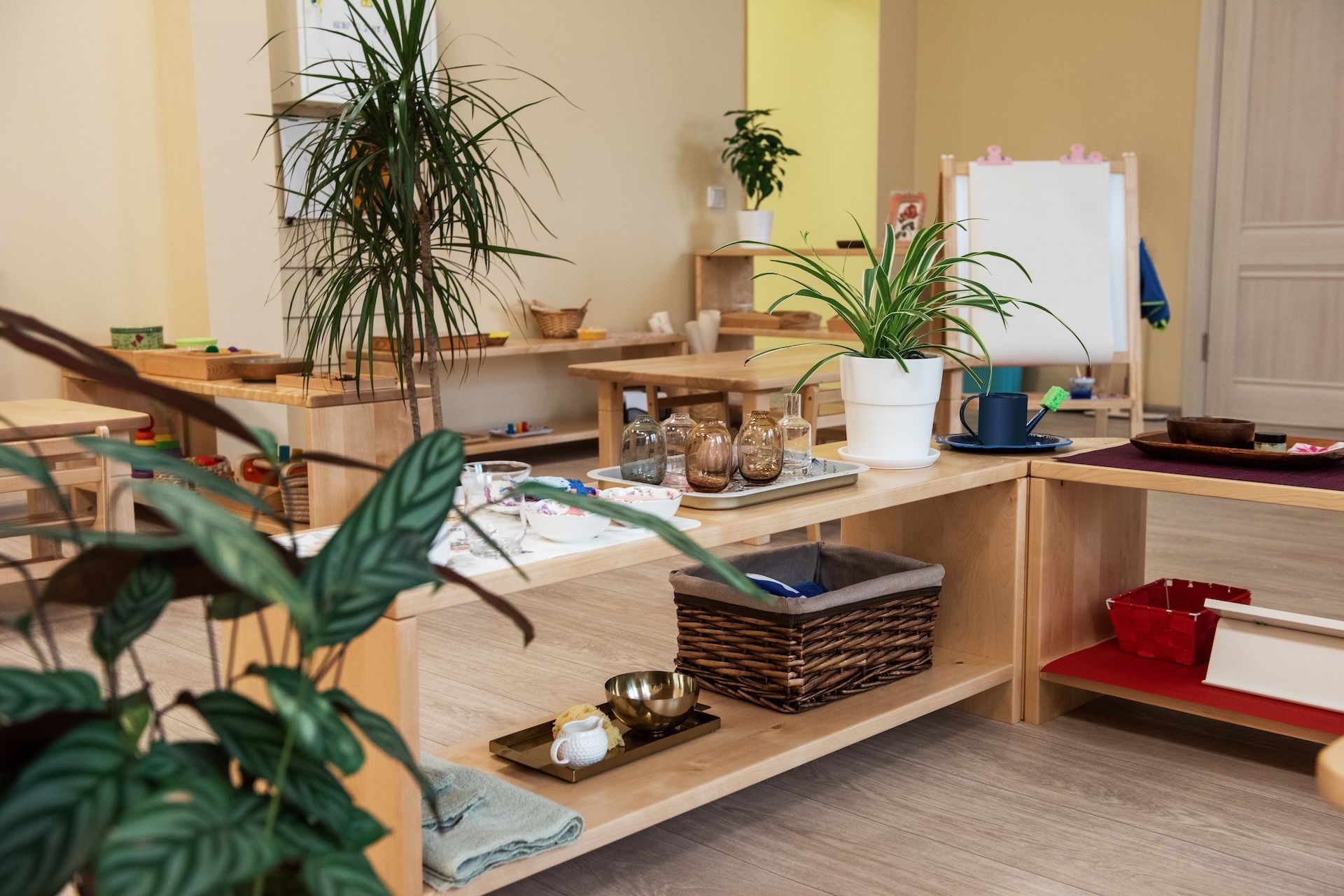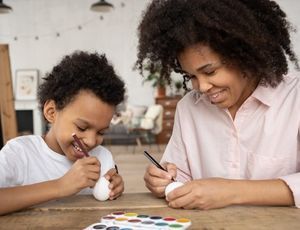Our Montessori Dictionary

We recognize that Montessori education can have some lingo that might need a little explanation. So in this Montessori Dictionary post, we’re going to focus on a few terms (some familiar, some perhaps not so familiar) that apply to both the early childhood years and beyond.
When possible, we’ve included some quotes from Dr. Maria Montessori and we encourage you to take a look at her work. Dr. Montessori was a woman well before her time and her books, such as From Childhood to Adolescence and To Educate the Human Potential, can be a source of insight and inspiration!
Grace and Courtesy
Grace and courtesy is an essential aspect of Montessori environments and supports children as they develop social relationships. Grace is how we move through the space around us, and courtesy is how we treat each other.
In the Montessori early childhood classroom, grace and courtesy is considered one of the areas of practical life. For example, adults give lessons on how to interrupt, how to accept an offering, how to offer help, or how to introduce oneself. These lessons are offered in small groups and the technique used is role-playing. Little social scenarios are acted out and provide a model for behavior that is situational. Like all other learning activities, grace and courtesy lessons are practiced and repeated. They provide a respectful way of learning expectations and aiding social skills before they are needed.
Grace and courtesy is never offered as a form of punishment or correction. We make sure children don’t experience embarrassment by being corrected by adults on the spot, as this makes children feel disrespected and not safe. Dr. Montessori reminds us of this in The Secret of Childhood: “I have come to appreciate the fact that children have a deep sense of personal dignity. Adults, as a rule, have no concept of how easily they are wounded and oppressed.” In time, if we offer these grace and courtesy lessons, and give children a safe place to practice, children will eventually perform these skills independently.
Human Tendencies
Human tendencies are unconscious, universal drives that support our adaptation to our particular time and place. All humans are born with innate needs and drives and are wired to adapt to their environment. The human tendencies – to orient, explore, order, abstract, imagine, calculate, work, be exact and repeat, perfect oneself, and communicate and associate with others – help aid this adaptation.
Dr. Montessori alluded to human tendencies when she wrote about the inner drive she observed in children and how this drive helps individuals construct themselves to develop into maturity: “Their behavior led us to become aware of a fundamental truth, namely that the child works for his own inner development and not to reach an exterior aim and that when he has done this work he has not really developed a special ability but he has developed something in himself.”
Prepared Environment
The Montessori environment is carefully prepared so that children can satisfy their human tendencies and thus develop to their fullest potential. The prepared environment takes into consideration what children need at their particular stage of growth, and as individuals on their own trajectory of development. The prepared environment consists of the physical and psychic aspects of the environment, of which the adult is a key part.
Through interactions in a prepared environment, children can construct who they are as human beings. As they go through this process of self-construction in their environment, children learn, grow, adapt, and create. The prepared environment is part of the triad of the child, the environment, and the adult, all of which are interconnected components.
Sensitive Periods/Sensitivities
Dr. Montessori was first and foremost a scientist and she was interested in what was happening prior to observable signs of human development. She was curious about what was going on in the mind before the skill manifested itself. For example, she wanted to know what was happening during the many months prior to children speaking their first word.
Without the high-tech tools that neuropsychologists and psychologists now have to measure brain activity, Dr. Montessori had to rely upon observation. She watched children, took notes, and made charts about what they did. As a result, she discovered that a particular object or aspect of the environment would have an irresistible draw for children. This attraction would last for some time. Children would keep going back to the same activity or element of the environment and would be continually drawn to it. Then the day would come when it held no more interest and something new would be attractive.
Dr. Montessori observed this phenomenon over and over again, which led her to believe that there must be something innate in children that was driving this interest. Building upon the work of biologists, Dr. Montessori adopted the term, sensitive period, to describe transitory periods of psychic development. Beyond the Montessori world, sensitive periods are now referred to as critical periods or windows of opportunity.
What does a school look like that focuses first on grace and courtesy, human tendencies, a prepared environment, and sensitive periods? Schedule a tour to see for yourself!






